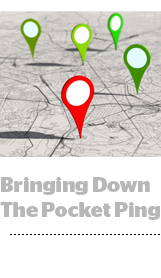 Location policy changes for Apple’s iOS 11 update coming in September and Android O, which is still in developer preview, will alter the way consumers dole out location data and have ripple effects for mobile marketing.
Location policy changes for Apple’s iOS 11 update coming in September and Android O, which is still in developer preview, will alter the way consumers dole out location data and have ripple effects for mobile marketing.
The most consequential new policy will be on iPhones and iPads, where a blue bar at the top of the screen will alert users when background apps are tracking location.
It will be easier for iPhone and iPad owners to control which apps can track, and whether tracking is allowed always or only when the app is in use. Apple is also introducing different ways for app developers to request location data consent from users, for instance by mandating apps offer in-use tracking and only allowing them to request “always” tracking once.
But it’s hard to gauge the exact impact Apple iOS 11’s developments will have on the advertising community, because developers and mobile tech companies don’t know how people will react to the blue bar or whether they’ll throttle their data use.
The iOS change will “undoubtedly have an impact on consumer behavior,” said Michael Rodriguez, IBM Weather Co.’s head of mobile product, in an email to AdExchanger. “But as with most things, as long as the app is demonstrating real value with the information provided, the users will continue to use the service.”
Android O, on the other hand, simply limits the frequency with which background data can be collected from once every few minutes to a few times per hour.
“There will be a real shift in the background data being generated,” said David Staas, president of the mobile location targeting and analytics firm NinthDecimal. “Only a handful of specific apps on someone’s phone could be in the position of capturing persistent location data.”
The most heavily affected apps will be those whose location tracking is always on unless restricted by the user, which is about 20% of the market.
Many game apps or services like flashlights pull persistent location data without any demonstrated value in the service, like fitness trackers, weather apps or local services like Foursquare.
Location enablement provides a marginal boost to ad inventory and also could be packaged to third-party data buyers, said Gareth Price, technical director at the mobile agency Ready Set Rocket. “This will lock off that avenue for a lot of lower-tier apps.”
Many developers are excited about the change since it is effectively targeted at bad actors in the space, said Coby Berman, co-founder and COO of Radar, which provides location data tools for apps. “The days of commercial agreements to pay publishers for location data are limited, as it’s clear iOS is doing everything in their power to crack down on that type of behavior.”
Price compared it to Apple stepping into the onboarding process when shady apps were pulling contacts without demonstrating value or going through a clear opt-in.
Specific apps could feel the blow, but marketers won’t necessarily see much change.
Persistent background data represents only 1-2% of the location industry data, which is mostly pulled from foreground apps, according to Staas.
“Apple is making consumer awareness changes and Android is making more developer-level changes where less background data will be available,” he said. “It will change aspects of what you can do and data will come less frequently in both.”
On Android, throttling location data could create a more manageable fire hose for some marketers. Though there could be mobile use cases like measuring dwell time that are undercut by the inability to ping for location every few minutes.
For mobile developers, the rules of the road are the road.
“We’re already seeing vendors building smarter tech to know when it’s really the right time to gather data or power up GPS and how to do that efficiently,” said Ran Ben-Yair, co-founder and CEO of the location-based advertising platform Ubimo.
“It’s hard to predict since it’s based so much on assumptions about users,” he said. “But developers see this coming and will be prepared.”
This post was syndicated from Ad Exchanger.

More Stories
Netflix Sets Up Killer You Marketing Activation With Penn Badgley
5 Ways Brands Can Weather a Tariff Storm as Consumer Spending Shifts Toward Value
Creativity shines